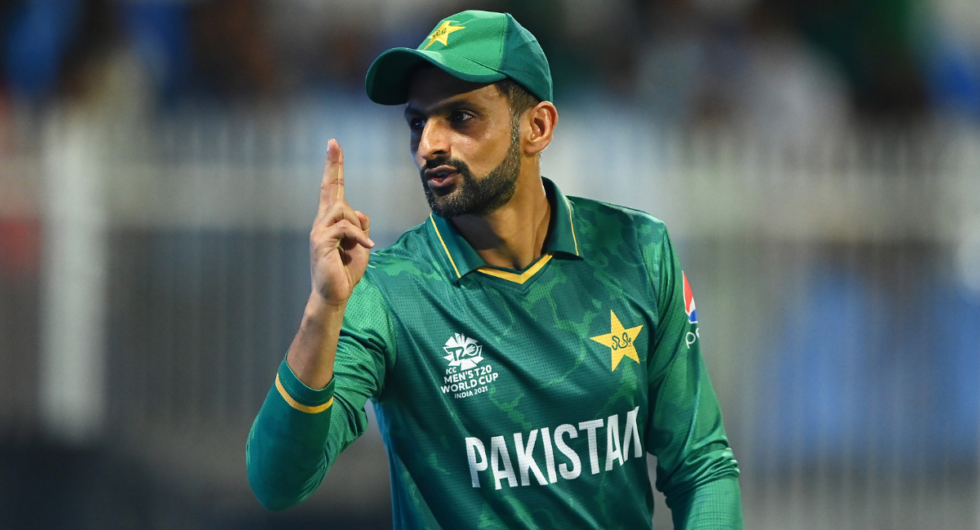Forty, sporty and thriving: Does Shoaib Malik deserve a Pakistan T20I recall?

 by Abhishek Mukherjee
by Abhishek Mukherjee
@ovshake42 4 minute read
Shoaib Malik’s fitness has seldom been in doubt, but there is probably no place for him in the Pakistan T20I side, despite his continued willingness to play.
During the ongoing Bangladesh Premier League, Malik reminded the media that he is active in the shortest format, and is “still very much available” to feature in Twenty20 Internationals for Pakistan.
“Trust me, even though I’m the oldest in the team, you can compare my fitness with a 25-year-old,” he added. There are few who would doubt that, despite the fact that he will turn 41 tomorrow.
Before assessing Malik on raw numbers, it is important to understand how his career progressed. Pakistan took time to figure out Malik’s role in the side. In 1999, he started off as an accurate off-spinner who sent down tight overs in Saqlain Mushtaq’s mould, fielded brilliantly, and batted at No.10. By 2002, he was batting in the top three. In 2006, he had a regular stint as an opener.
To be fair to the various team managements, you cannot blame them for shuffling around someone who averaged at least 37 in every position from opening to No.5, and did not do too poorly at Nos. 6 or 7 either – while scoring at reasonable pace and bowling tidy spells.
They saw a gap, they slotted in Malik, and he adapted to every situation. In the history of men’s ODIs, he is one of only seven cricketers with 7,000 runs and 150 wickets. From Pakistan, Shahid Afridi is the only other one.
Even in Test cricket, he averaged 42.60 at the top of the order and picked up the occasional wicket. There was a five-year gap between 2010 and 2015, following which he returned in a fashion that was spectacular even by Pakistan standards. After 292 runs (including a career-best of 245) and 11 wickets at 20.72 from three Test matches against England, he promptly announced his retirement.
Barring his longevity and fitness, if there is one thing that has defined Malik, it is adaptability.
The behemoth
Let us first understand the sheer volume of Malik’s Twenty20 career. His 12,280 runs (average 36.11, strike rate 127) is the most among cricketers who do not call themselves the Universe Boss.
That strike rate rate might make for mediocre reading, but one has to understand that Malik’s international career is older than the format, or even the 21st century. He was there when everyone had been figuring out how to play the format, how to pace their innings, what a par score would be.
In the first decade of the 21st century – still early days for Twenty20 cricket – Malik was the lynchpin of the Sialkot Stallions during their five consecutive National T20 titles and world record streak of 25 consecutive wins.
He was one properly timed scoop away (Misbah-ul-Haq’s, not his) from becoming the first captain to win a T20 World Cup.
As the format threatened to move away from the anchors, Malik’s strike rate went up. For example, until the end of 2016, he used to strike at 114 in T20Is. Since then – he has not played since November 2021 – he has struck at 153. Against ICC full members, that number reads 138 – not incredible, but not bad either, and certainly an improvement on 114.
Malik’s fans may point out that both Babar Azam and Mohammad Rizwan strike at under 130, and they are key components of the Pakistan side. For some time, Pakistan’s T20I batting strategy has revolved around at least one of them – both, if needed – batting deep into the innings before the heavy artillery comes out all guns blazing.
Indeed, Babar faces 36 balls per T20I innings and Rizwan 38. At No.4 or 5 – where Malik has mostly batted since 2017 – thus, Pakistan need someone who can get off the blocks very quickly and score at a rapid rate. There is little utility for someone who bats even slower.
Across his last three leagues – the 2022/23 editions of the PSL, the LPL, and the BPL – Malik’s strike rate reads 134. While neither is an unusually high-scoring league, there is little in that number based on which he can merit a recall.
There is little room for a third anchor in a T20 side.
Of course, there is the matter of his bowling, but over the years, he has bowled less and less. When he bowls, he does do a tidy job, as his 162 wickets (at 27.70) and economy of 7.01 suggest – but seven balls a match across nearly 500 matches hardly makes his bowling a relevant parameter.
Pakistan already boast of a world-class all-rounder in Shadab Khan. If they want someone else who can send down the occasional over of spin, they can always fall back upon Mohammad Nawaz, who scores roughly at the same rate as Malik but bowls nearly three overs a match.
Despite his enviable adaptive skills, time has probably run out for Malik.

